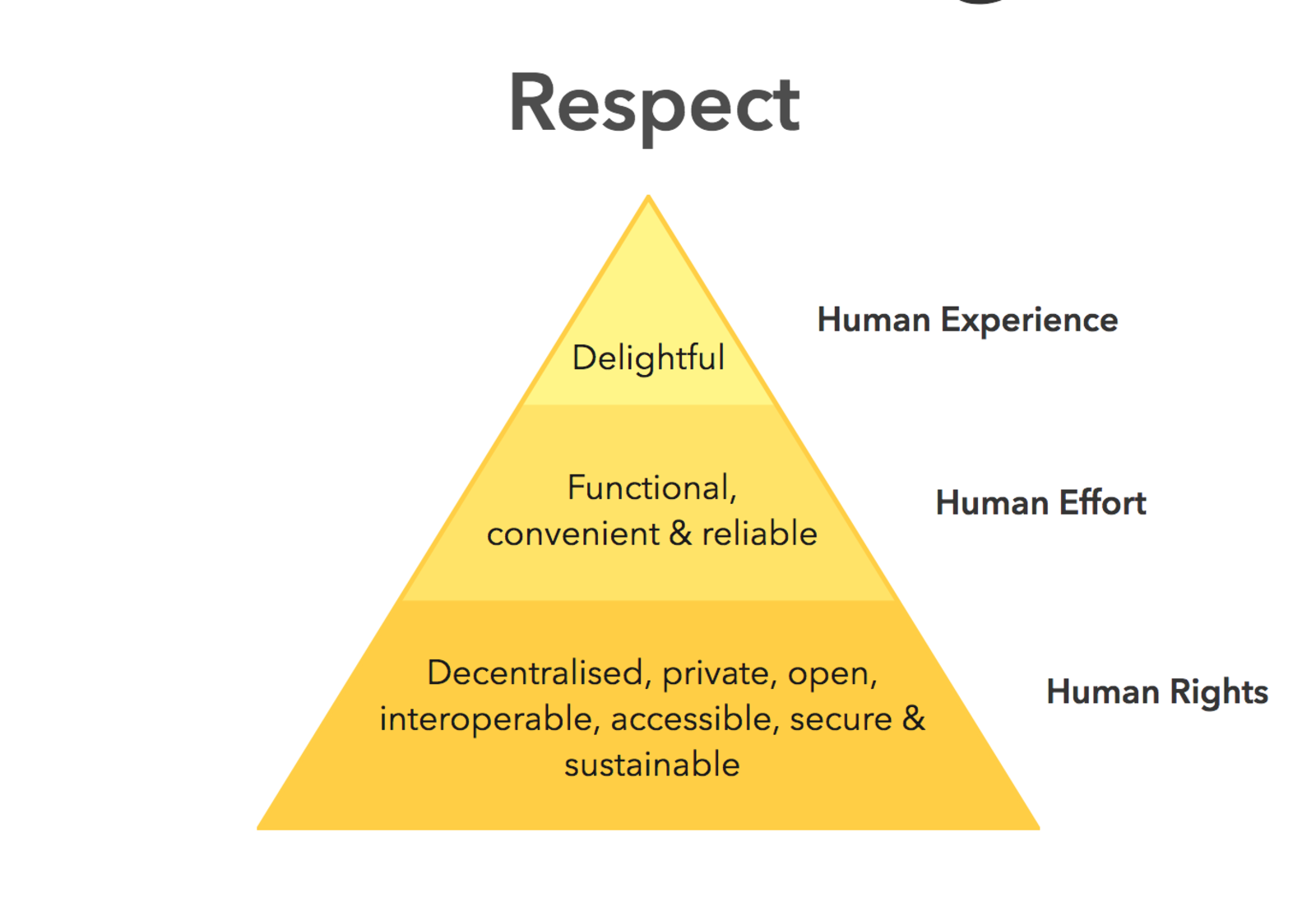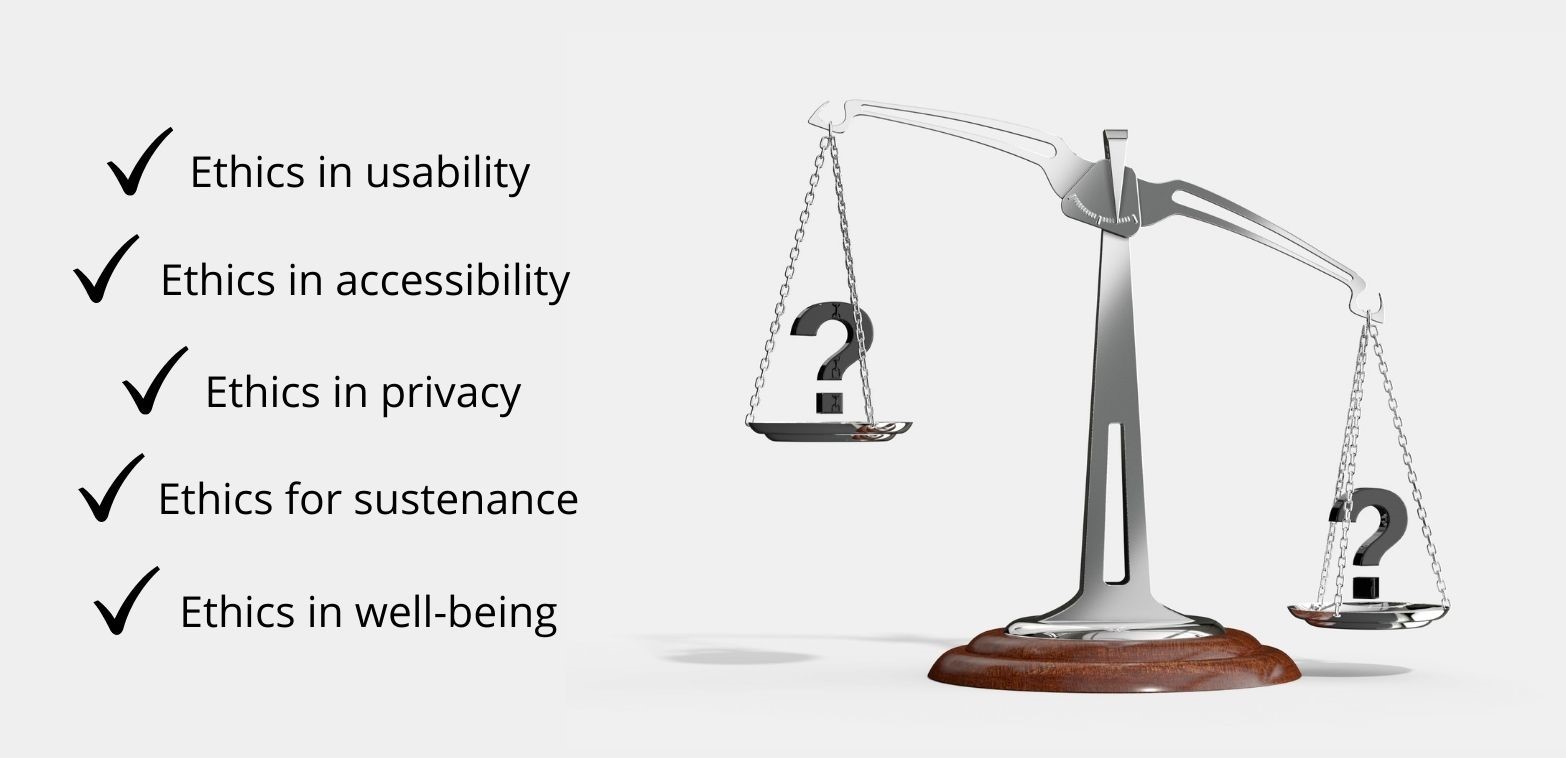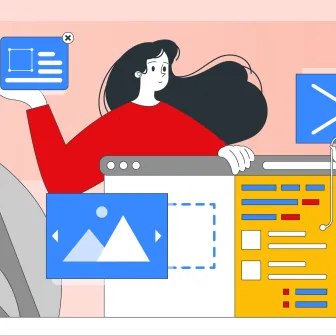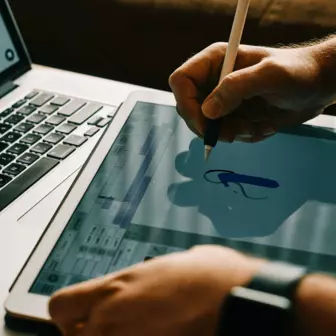Have you ever thought how something can be deemed right or wrong? People say that something is morally right or wrong, but how do they decide? Something could be morally right for me, but at the same time it could be morally wrong for you, so whose opinion should be listened to?
There is no accurate answer to these questions, but there is a concept that can help us get to some semblance of an answer and that is a field of philosophy. Ethics or moral philosophy is a concept that has aided us in defining what is good and what is evil. It aims to solve the perpetual dilemma of human morality.
Don’t worry, I won’t be talking about human morality in the real world, however, I would delve into similar ethics in the virtual world of web development. So let’s begin.
What is Ethical Design?
From the above written introduction, you might have understood that categorising ethics in black and white would be quite difficult, the colour grey more aptly describes it. This is especially true in terms of ethical design.
I’ll give you a situation to make you better understand my point. Imagine you are approached by a client, who says that he wants to build an application that could possibly change the way we perform internet banking for the better with you as the developer. However, for the same you would need to provide him with the personal data of your users. Now in this scenario, there would be greater good, if you let the data be used without consent. So, is that ethical or unethical? How do you decide? Is this not a grey area?
To understand ethical design completely and get to the grey area, we have to look at the meaning of web design, since that is the domain we are going to be discussing throughout this blog. Web design is a process, which essentially decides the looks, the feel and the functionality of a website. To be a little more technical, it conceptualises, plans and builds websites as well as web applications. Designing, developing and maintenance, both the front and the backend is crucial to web design because a site’s usability and its performance hangs in the balance. Another aspect of essence for a web design is the ethics involved in building it.
Design ethics can be understood as the moral behaviour that needs to be put to use through responsible choices during the design process. Its examples are seen in every aspect of designing, from creating the layout of a page to the colours being used to the content and finally, the way it interacts with the clients. Every choice that is made by the designer has to be made with an ethical forethought.
Ethics have been an integral part of designing the very beginning, however consumer awareness and advancements in scientific knowledge have made ethical design come under a brighter spotlight. So, you cannot afford to go wrong with the ethical aspect of designing your websites or web applications.
Here is a concept that might help you understand ethics in design a little better.

Each of the layers in the pillar are integral for the holistic implementation of ethics in design. Human rights, human efforts and human experience, all play an essential role in it. Experience without the efforts would be worthless and efforts without any rights would be a sham. It would be wise to take a look at the pyramid of ethical needs before embarking on the ethical journey of design.
Summing up the meaning of design ethics, all I would want to say is that design ethics transcend the product or the project, they are being practised in. It is a concept that is much bigger, involving a user’s surroundings and his entire ecosystem.
How ethical design came to be?
I thought it would be appropriate to get to the beginning of ethics in design, before delving into its importance and implementation. So, here it is.
The NSA spying scandal in 2013;
The Russian interference in US elections in 2016;
The Cambridge Analytica in 2018;
What do all three of these scandals have in common? That would be the fact that they encroached on the ethical boundaries. Because they were under the scrutiny of world media, everybody knew about it. And hence the dialogue of ethical design finally started.
You must have heard of the erroneous voice recognition software that led to false cheating allegations against 7000 overseas students in the UK and the consequent cancellation of their visas. If an ethical route had been opted in the designing and developing process of that algorithm the innocent students would not have paid such a hefty price.
I would be wrong if I said that only scandals are responsible for the emergence of ethical practices in design. Although media plays a pretty crucial role in providing design ethics its due importance, it is also the pioneers who have made ethics something of a necessity. People like Tristan Harris and Mike Monteria need to be given their due credit since they have a big part in making ethics a mandatory aspect of design. And we, as users, should be grateful for that.
Websites and applications have become considerate to the user’s vulnerabilities because of ethical design. The elimination of detours and distractions, the minimisation of misinterpretation and enhancement of interpersonal relations has been possible because of ethical design.
Now that ethical design has come to somewhat of a pinnacle, with websites and web applications taking it up as part of their design strategy.
Why have design ethics become a need?
Technology had advanced by leaps and bounds in the present times. It would be suffice to say that we cannot even imagine life without it. The fact that it has made our lives easier could be the reason. However, that is not the entirety of the technological picture. There is a dark side too.
Focusing on the world of digital products, which has boomed exponentially as well, a major reason for this is the user’s trust. People trust that what they are buying and what they are giving in exchange for the product would be in safe hands. So, when that trust is broken, it is bound to pinch. Even tech giants like Facebook and Google have broken it plenty of times.
So, how can the user avoid being exploited? The answer lies in the design process. Be it the actual product or the UX, today’s designer’s have become increasingly aware about the ethical ramifications of their designs. However, with so many aspects in the process, something is bound to be overlooked. The result is the user losing his trust.
That is why design ethics have become so important. Just being aware about them is not going to cut it now, you have to actually know how to implement ethical design. Users must feel good about your design, they should enjoy the experience, rather than feel stuck in the constant battle of notification and emails. They should not feel cheated or harmed. Since they are who drive the business forward, I would say the ethical approach is the way to go.
Where should you practice ethical design?

Design ethics aims at making the users happy with the experience of a website or a web application. To do so, you need to know which areas need to be focused on. Design ethics may have one outcome, but it does have a number of dimensions to it. Let’s take a look at what designers can do to get these straightened out.
Ethics in use
The foremost dimension of ethics is in the usability of a product; as a designer, you have to ensure that the product is not only usable, but also safe, intuitive and by no means poses a life-risk to the user. Imagine of aircrafts and cruise ships weren’t designed with the usability ethics in mind, yeah, it is not a scenario we want to imagine.
Ethics in access
Next comes ethics in access, the web is a place for everyone, including the differently abled. So, ensuring that someone using a screen reader can access your web portal with ease is the ethical aspect, you cannot afford to overlook. From colour and contrast to the language being used, an ethical design would have to be accessible to all.
Ethics in privacy
Privacy is another major aspect of ethical design. Today, users entrust a lot of private information on the websites that they use. From their identity proofs to their financial details, everything is stored online. So, it is the responsibility of designers to not break their trust. Creating such elements in the design process that not only inform the user, but also allow them to modify and delete their details is one way to go about it.
Ethics for sustenance
Sustainable development isn’t something any of us is not aware of, since our future depends on it. Working on a design that also promotes sustainable development is another dimension of ethical design. For instance, if a business were to create such digital solutions that encourage sustainable behaviour amongst its users along with removing the chances of overconsumption, would you call it anything other than ethical?
Ethics in well-being
There have been instances when design practises have affected the users’ health, both physical and mental. From a hyperlink aggravating the user’s epilepsy to a negative post inducing social anxiety, design can take a toll on the user’s health. A design that is free from misleading dark patterns is the final dimension of ethics.
Ethics in design paint a pretty clear picture of what the outcome needs to be. By covering each and every dimension of ethical design, you will be free of any unethical mishaps.
What are the ethical questions?
Ethics in design are all about asking the right questions and seeking their answers. If you know what those questions are, then you, my friend, are on the right track.
What should you be asking before the project rolls out?
This involves searching for areas that might become a reason for the failure of a project, the combined causes, the blindspots and the ways you will get yourself out of them. These would ensure that your project is safe from the get go, Prevention is better than cure, right?
Are you considering the bigger picture?
When you know what the bigger picture is, what the end oal is going to look like, you will most definitely have a better outcome. So, you and your team should ask yourselves, what is it that you are building, what is your ethical standpoint, what are the risks and are they going to be worth it?
Ever thought of being proven wrong?
You might think that you have made a full-proof design, and there still could be flaws in it. Getting other people to test it out and give you the flaws is the best way to know your weaknesses. This would help you in knowing the ethical pressure points, the trade-offs you have made and you might also get the solutions. So, being proven wrong is not the end of the world, at least not in ethical design.
Have you decided on your product’s use?
You might have created a product that was intended for a specific purpose and the users might end up using it for an entirely different purpose. So, ask yourself what is the purpose of your product, how should and shouldn’t the user use it, is your design speaking for itself and finally, are you hindering the true potential of your product?
Are you willing to show your work to the entire world?
When you are ethical, you are not afraid of letting the world know the same. So, ethical design also means answering the tough questions like why did make a trade-off, the limitations of the product, can it be misused and what is the probability of the product having good effects over bad?
Once you have the answer to all of these questions, you will be another step closer to be ethically correct in your design.
How should you practice ethical design?
Without putting the ethics in place, can you really become ethical? I think not. The practice of design ethics needs to be implemented through your web project. From the planning to the execution, the ethical notions have to be clear stated. Here is how you can do that.
Understand your organisational goals and values
Every organisation has certain core values that are part of its fundamental makeup. These values could be ensuring employee satisfaction or the goal of building a better world for everyone. If these values decide how your web project is designed, you could never go wrong with the ethics. So, understanding your goals and knowing your values is the first step you can take towards ethical design.
Don’t get carried away by assumptions
Whenever a project starts, assumptions come along with it, especially when you are not sure what the outcome is going to be. These assumptions can be related to the value an end user might get, the feasibility of data or when you are unsure of the features and their effects. You have to make sure that you do not assume too much, because that would be a recipe for disaster.
Don’t trade off
There are often times in the life of a project when you might want to settle for less. Phrases like it is just a small-scale test, no one will notice, everybody does it or the most bewildering, let’s hide it in the Terms and Conditions are thrown out a lot. They might seem fair to you at some point, but you cannot go along with them. Trying to think long-term can help you with that. Always remember that if there is a feature that you would not want to be in your project five years down the line, it’s not worth having even today.
Consent the cookies
The 2018 General Data Protection Regulation(GDPR) has issued a set of rules that companies have to adhere to when collecting consumer data. The prime purpose is transparency. And the prime example of such transparency is the cookie consent bar. You must have seen hundreds and thousands of them when surfing the web. Cookies help companies know their users and their search history, but the user needs to be told that implicitly and the data can only be taken, if the user actually consents. Therefore, a simple and easy-to-understand notification of line or two will help you in keeping the transparency and ethics on point.
Aim for transparency and honesty
Ethical design would never be complete with complete transparency and honesty. Transparency in pricing and data usage is mandatory. If you are going to be using the user’s data, you need to tell them. If you are going to be adding additional costs at the time of checkout, you need to tell them beforehand. Aiming for honesty will also serve you well, saying you are going on a sale, when your prices remain the same as before, is not a tactic the user would consider ethical.
Ask for permissions every time
You can’t assume what a user might want, so asking for permission is the only way to go. This is especially true when money is involved. Many web applications offer free trials and when that is up, they tend to charge a sum. Doing this without notifying the user that his card is going to be charged is unethical. Netflix and Amazon Prime are setting examples in this regard.
Along with this, there are certain default settings on websites. You, as an ethical designer, need to make sure that the user benefits from those checked boxes. If he wants you to send the newsletter every month, he would check the box himself, you don’t need to do it for him.
Spam notifications are another block in the unethical pillar, and no user is going to give you permissions for them. You can’t be sending unnecessary emails and notifications. The user is not going to read them. Start valuing their time and yours.
Always remember that tricking a customer in paying extra or providing you his contact information is a dark pattern, not an ethical one. So, always seek permission.
Enunciate the negatives
You also need to be careful about the negative aspects of your product or service. Stating the harmful effects in an inconspicuous way or not stating it at all is not going to benefit the user. For instance, when a product is vegan and cruelty free, you would find this information front and center. However, have you ever seen a product or service highlight its negative. Airbnb has set an example in this regard, it implicitly states the flaws, like when a home does not have a carbon monoxide detector. Now this is an ethical design practice.
Use data to improve UX
All of us have heard stories about the data misuse and certainly, it is unethical. However, using data can be ethical, especially if you use it to improve user experience. Ever shopped at Walgreens? It is an American pharmacy that provides reminders to its users when their prescriptions need refilling. This is obviously done by using the user data and the outcome is positive.
Advertise, but not track
Tracking someone’s movement to the minutest of details cannot be deemed ethical. However, today giants like Facebook and Google happen to do just that with their advertisements. They tend to base their advertisements on granular data. Depending on one party, like Facebook, to perform a major part of your marketing workup is a weak link in the strategy. Can you put that much trust in a third party? Instead adding a custom link to your ads and monitoring their click rate by yourself is a much more ethical and smarter move. John Gruber has tried and tested it on his blog, Daring Fireball.
Keep the users at the forefront
If you create a design for the user by keeping him on the forefront, by thinking about its effects on him and his environment, you can never go wrong with the ethics. Jakob’s law of UX clearly states that a user will always spend more time on other sites than yours, so trying to make your project similar to what is out there in the market will help you and the user alike. Forget about what you think would work and start thinking about the user and his needs.
Prioritise the customer support team
Lastly, you have to realise that the consumer support team is the most important in creating ethical user experiences. When a user is displeased with a service, whom does he call? When a user i snot able to understand the technical jargon of a product, where does he turn for clarification? The consumer support team is at the frontline for consumer grievances and you have to be prioritised to know where you lack. Don’t just run after the numbers.
You might think you would be all set in terms of ethics by now, but no, there is one more thing that you have to follow. And that is sharing of knowledge. Managers need to share their knowledge and expertise with their subordinates and the subordinates must put forth their fresh perspective when a project begins. There isn’t one person who can say that he knows everything and knowledge sharing and evangelism helps in ensuring that things do not get lost in translation. Because if they, you might not be secure from an ethical standpoint.
Do you benefit from being ethical?
Going the ethical way is bound to have benefits, they might be less or they might even come a little late, but they are going to be there. Of course, you would not be able to compete with an organisation that would do anything for a profit. No morals may pay more for now, but do you think that would be possible in the long run?
When you stick to your ethics and values in design, there are three things that will happen;
- The foremost, it would make you think out-of-the-box and you will end creating such features that you never thought possible.
- Second, you will be less at risk. Designing ethically means that you are doing things that would never harm the user or the environment. Therefore, you would not find yourself in a situation when your practises have put you at risk of a hefty lawsuit.
- Finally, being ethical also means control, control of your actions, your employees and the image of your business.
What is Unethical in Design?
So far, we have discussed all the corners of ethical design, its meaning, its implementation and its benefits. Now it is time to look at the opposite side of the spectrum. This will help you know where you have taken a turn for the worse and help you avoid the unethical course of action.
The surveillance capitalism
Surveillance capitalism refers to the trend of manipulating user behaviour based on their individual data. Companies use this data to profile their users and predict their future behaviour through machine learning. In simple terms, AI is used to assess what a user is likely to do in the future without the user havin any idea of that predicted action. Do you see how unethical this is? A common example of this concept is found on Facebook, it takes into account the users current actions and based upon that they provide a feed that is bound to engage him leading to higher engagement numbers for them and consequently, more money. Now, when you see yourself scrolling through your facebook for hours, you know why.
The unconscious bias
An everyday example of unconscious bias is when someone tells you that they have put on weight and your instant response is that they are still beautiful. Beauty was not even a part of the conversation before you brought it along. It is a common stereotype that being fat is being ugly. These stereotypes are always with us, you could say that they have become innate. So, the same kind of bias is found in web design as well and it becomes unethical.
The redundant adverts
Do you think the pop-up ads and auto-play videos are ethical? You as well as I know that they are not. They are made for the intention of driving more business and consequent profit, but do they do any good for the user? Why does he have to go through a 5-minute add before getting to the thing he actually came to you for?
The concept of ‘alert fatigue’ is being practised in the healthcare UIs. It started out as a noble idea, but with the number of notifications that are received by the users, nobility is not something I would use to describe it now.
The problem with the unnecessary notifications and adverts is that they distract the user from his purpose, which is the only priority for him at that point. The fact that the redundant ‘dings’ also induce fatigue makes it all the more worse.
The unwanted purchases
There is another concept floating around the e-commerce businesses and that is selling what is not needed. This happens when a suggestion is made to the customer to buy an additional item with his existing purchase or simply upgrade it. Who do you think reaps the most benefit, if the customer were to take up the offer? And the answer will tell you why it is unethical.
The incorrect use of metrics
Every company used certain metrics to help boost traffic and sales on their web platforms. There is nothing wrong in doing so, however, when these metrics take an unethical turn and are used incorrectly, the problem begins. A smartwatch that is built to show you the number of calories you burn in a day can make you eat more, if the calorie count it shows is incorrect. And that is unethical on so many levels. The same is true for analytics, displaying the view and like count cannot be deemed ethical.
All of these can be regarded as dark patterns and these patterns tend to have an effect on the user’s mental health. Let me quote an example here, Facebook’s manipulation of user feed to test the effects of positive vs negative posts upon users. In this test, many users had only positive posts in their feed, while others had only negative. Without knowing that such a kind of test was happening, what would be the effect of the negative feeds on someone with depression and anxiety, not good, I imagine.
Now that you have understood the relevance of ethics in design, read this comprehensive guide to web design to get a wholesome picture.
The Bottom Line
Unethical design practises are becoming more and more in the present, but so are the ethical ones. However, there is a perspective that makes you question whether anything could even be unethical. Something that makes someone unhappy and upsets them is often deemed unethical. But isn’t it also true that what may make me happy, may make someone else sad. So, yes there are many unethical practises seen on the web, however, you cannot be certain that they are truly affecting the users in a disturbing manner. Some people may love getting suggestions to buy more from Amazon. Ethics truly is a grey area, with no clear cut definition of
what is right and wrong.
You cannot simply mark a company as good or evil, that is not going to serve a purpose. There are going to be some ethical flaws in your current project, all you can hope for is to identify all of them and work to improve them to the best of your abilities.
Subscribe
Related Blogs
UX Best Practices for Website Integrations

Website Integrations determine whether users stay engaged or abandon a site. I experienced this firsthand with a delivery…
How design thinking acts as a problem solving strategy?

The concept of design thinking is gaining popularity these days since people across different industries are using it as a…
10 major challenges that come across during an agile transformation

It’s no longer a mystery that agile was created as a response to the various concerns that the traditional waterfall…




